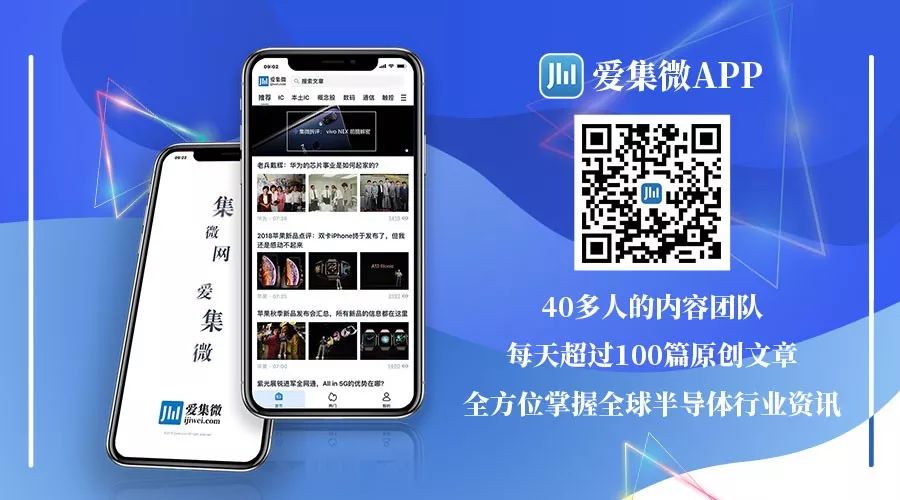
Author: Veteran Dai Hui
Author’s Note: After Hisilicon Semiconductor was established in 2004, the first chip that was sold in large quantities (the video codec chip 3510) did not rely on internal customers for success; instead, it had to face the brutal market directly from birth! Veteran Dai Hui spent several months conducting detailed research with multiple individuals involved in this history, and this article is truly a labor of love.The entire article is ten thousand words long, so please proceed with caution.
Introduction
On the evening of September 28, 2018, the “Jacky Cheung Classic Tour Concert” was held at the Hebei Olympic Sports Center Stadium, with over 30,000 spectators present. The local police were fully engaged in security work. A facial recognition system combined with high-definition video surveillance was deployed in key areas of the venue and its surroundings, identifying blacklist individuals in seconds and triggering alarms to assist the police in quickly capturing three wanted persons online. Yushi Technology claimed to have used its intelligent solution. This was already the third time a fugitive was captured at a Cheung concert, with industry giants in the security sector participating.

“My first reaction was: why is this happening? Later, I verified and found that our country is too advanced; big data is very advanced. So as long as someone commits a crime in our country, whether they go to my concert or to a convenience store, they can easily be caught, so it’s best not to commit crimes,” said fugitive nemesis Jacky Cheung.
Walking down the streets, seeing cameras overhead adds a sense of safety. The public security in Shenzhen is much better than it was 20 years ago. China’s initiative to build “Safe Cities” has indeed maintained stability.
The vast market has fostered a huge industry. Most of the world’s cameras (or modules, circuit boards) are produced in China. It is well-known that Hikvision, Dahua, and Yushi (Qianfang Technology) are the three giants in digital security, and of course, China also has many small and medium-sized enterprises. Not only in security but also in live streaming, communications, and numerous industries require similar devices.
Recently, the U.S. government announced that it would no longer use Chinese brands of cameras. That’s when I realized they had already entered the public utilities market in the U.S.
China has strong electronic system design and manufacturing capabilities, so the question arises:Who makes the core system chip for video surveillance?
Cameras primarily use two types of chips:
1. CMOS sensors are used for imaging, with suppliers from both domestic and foreign companies such as Sony, OmniVision (acquired by Will Semiconductor), Geke Micro (Shanghai), ON Semiconductor, Sitronix, and BYD.
Geke Micro pioneered the CMOS sensor industry in China and collaborated with SMIC. The founder, Zhao Lixin, graduated from Tsinghua University, and his father is a well-known craftsman. He worked in a workshop during his summer breaks to earn his tuition, and I specifically went to observe.
2. System on Chip (SoC). This includes several components such as the codec unit (for compressing video streams), CPU (system control), ISP (image signal processing), etc. Note that in the early years, each of these functions was a discrete chip, but now they can be integrated into one chip.
As for this chip, if you ask industry professionals, they will all tell you in unison,Hisilicon is the dominant player, with revenues reaching the billion-dollar level,now occupying more than 80% of the market share.
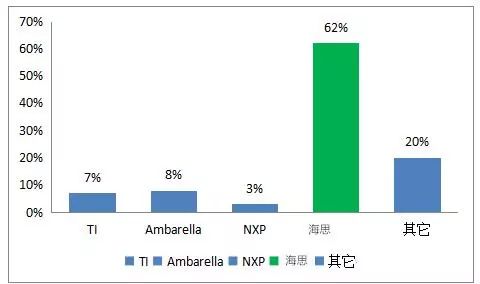
Figure Caption: Codec chip shipment share in 2016, data source: IHS
Hisilicon’s market share far exceeds that of traditional chip giants Texas Instruments (TI) and Ambarella. Recently, there are even rumors that TI plans to exit the security chip market.
Chapter 1: About Video Codec
The success of Huawei smartphones is largely due to their strong baseband capabilities, which is the communication ability between the phone and the network.
This time, the industry is buzzing about Apple smartphones, claiming “poor signal, slow speed,” suspecting it’s due to the use of Intel’s baseband, which is not as strong as Qualcomm’s.
Qualcomm is very strong in baseband technology. It has also integrated surrounding resources (such as CPU, etc.), selling the system on chip (SoC) very well, known as the “sell baseband, give CPU” strategy!
The system chip for IP digital cameras (IPC) is centered on codec capabilities. Whoever can excel in codec can integrate surrounding resources to provide a comprehensive SoC (system chip) solution.
This is Hisilicon’s “Star Absorption Technique”!
Let’s start with resolution. The higher the resolution, the clearer the image we see. Generally speaking, HD = 720p, Full HD = 1080p, Ultra HD 4K is 4096×2160 or 3840×2160. The unit is pixel.
However, the higher the resolution, the greater the amount of raw image data, which requires increasingly powerful codec algorithms to compress the file size; otherwise, it cannot be stored or transmitted.
Veteran Dai Hui would like to digress. In 1994, my undergraduate graduation project was completed in the image laboratory led by Professor Luo Limin at Southeast University, under the guidance of Professor Lü Yuqi, implementing JPEG on a computer. This was the first static image compression standard in the world, defined in 1992. China was basically synchronized with the world.
I completed the compression or decompression of a 512*512 pixel black and white image in ten minutes on a 386 computer (without a coprocessor), compressing the file size to one-tenth of the original.
During my defense, I was the first to go on stage, and the teachers were in good spirits, asking: If you change a certain algorithm inside, what different effects would it have? The rookie “Little Soldier Dai Hui” honestly replied: I don’t know, I strictly followed the protocol to implement it!
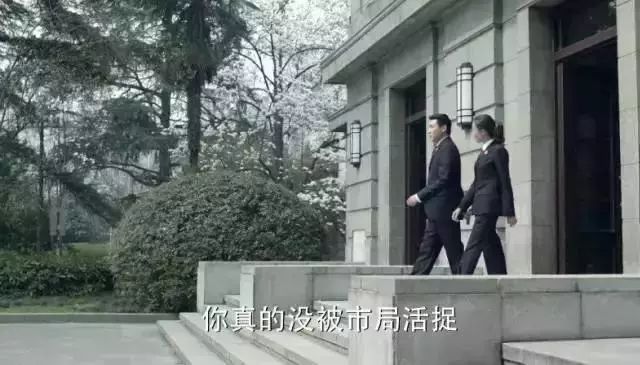
Figure Caption: The image laboratory at Southeast University, where the filming of “In the Name of the People” took place in the auditorium’s annex.
I later learned that my graduate school classmate Liang Fan at Sun Yat-sen University also implemented JPEG encoding for his undergraduate project. However, he calculated faster, using a fast lookup table method, unlike me, who simply called COS and SIN functions. Back then, I felt a bit of “Why is there a Yu born after me?” but now I have to rely on this academic elite.
Photos taken on mobile phones usually use the JPEG algorithm for compression, with sizes around a few megabytes. If one chooses to use “RAW” format, it is the true “original image,” unprocessed and uncompressed, usually several tens of megabytes.
After images, we entered the video era. In the late 1990s, camcorders were quickly phased out, and VCDs and DVDs surged. At this time, video-based codec standards made their debut! VCD uses the MPEG 2 compression standard.
Under the same image quality conditions, H.264’s compression ratio is more than twice that of MPEG-2. For example, if the original file size is 88GB, using the MPEG-2 compression standard reduces it to 3.5GB, with a compression ratio of 25:1, while using the H.264 compression standard reduces it to 879MB, achieving an astonishing compression ratio of 102:1 from 88GB to 879MB. This has significant benefits for saving video hard disk storage space and reducing bandwidth requirements for network transmission.
Currently, the latest video codec standard is H.265, which has double the compression capability of the previous H.264.
However, this comes at a cost, as it requires increasingly powerful CPU computing capabilities! Therefore, the transistor sizes in chips are getting smaller to accommodate more transistors, allowing for greater computing power.
Huawei has participated significantly in international codec standards and is a major technical contributor to the latest H.265 standard. VoLTE technology can also use the H.264 encoding algorithm for 4G calls.
Some netizens joked: In the future, watching finely detailed romantic movies can also use Huawei’s technology!
Chapter 2: Deciding to Make Video Codec Chips
In 1996, Huawei considered expanding its R&D beyond switches, and Liu Qiwu formed a team to develop conference television and video surveillance products, establishing the multimedia business unit.
Conference television is easy to understand; it’s equipment used for meetings. A new product called “Zhi Zhen” has also emerged.

Figure Caption: Conference television from Haidilao, eating hot pot together from thousands of miles apart!
The first generation of video surveillance products was mainly used for monitoring communication rooms, and later this business was integrated with Huawei Electric’s environmental power monitoring and sold to Emerson.
In 2006, Huawei re-entered this field, mainly to develop surveillance software platforms based on the operators’ “Global Eye” needs, but they generally did not make cameras themselves; if needed, they would OEM them externally.
These businesses did well, but the market was relatively fragmented, with Huawei being just one of the major players. In terms of scale, compared to the super giants like base stations and smartphones, it was far behind.
In October 2004, a subsidiary called Hisilicon (Little Hisilicon) was established to engage in chip sales. At the same time, the service system chips and public platforms were placed in the 2012 laboratory, called Big Hisilicon.
In 2005, Hisilicon Aiwei took the lead in defining specifications for several consumer electronic chips, including SIM card, set-top box chips, and video codec chips.
Huawei’s multimedia business has two aspects. The head of Huawei Software Company’s digital entertainment product line (IPTV, video surveillance software platform) is Zhang Guoxin and “Old Wang Next Door”, while the head of Huawei Terminal Company (conference television and set-top boxes) is Li Yunbai and Wang Zhaoxiang, both of whom participated in defining the specifications for Hisilicon multimedia chip products.
The head of video codec chip development is Yang Fengguo (PDT Manager), Luo Kun.
Conference television is an old product of Huawei, and the initial idea for this chip was to use it in conference television first. This development approach was similar to the previous idea of developing supporting chips for system equipment; for example, the first ASIC developed by XU Wenwei in 1991 was used in the interface board of a program-controlled switch.
Chapter 3: Almost No Revenue in the First Three Years
Ren Zhengfei set a goal for Hisilicon’s development: recruit 2,000 people and achieve external sales of 4 billion RMB within three years. The former was completed quickly, but the latter was still far off.
The first product to be directly discontinued by Hisilicon was the SIM card chip. At the time of project initiation, the market price was ten dollars. By the time it was developed, the price had dropped to one dollar. The technical barriers were low, and competition was fierce, leading Hisilicon to abandon this business. It was indeed a heavy blow.
Repeated failures, yet never giving up.
Between 2004 and 2007, Hisilicon’s consumer chip external sales were almost zero!
It was very difficult to obtain the first major customer for the chips, which is known as the “0 to 1” dilemma. Ideals are always beautiful, but reality is stark.
As mentioned earlier, the video codec chip was initially planned to be used in conference television. However, conference television has a disadvantage: it is usually used by leaders, and if there are problems, it cannot be covered up, which would affect Huawei’s major product sales. Therefore, if the conference television product used the newly released Hisilicon chip, frontline salespeople would likely refuse to sell it. Veteran Dai Hui, having worked in the sales system for eight years, understands this mentality well: small products should not cause trouble!
With no other choice, Hisilicon had to seek the market externally. The early market development was a history of blood and tears. The sales manager He Zhiqiang (former Minister of the Telecom System Department) was worried, as it was fundamentally different from the previous sales model to operators!
When God closes a door, He opens a window. If that window doesn’t open, turn on the air conditioning!
Hisilicon inadvertently entered the digital security market.
In November 2005, Hisilicon participated in the Security Expo (the world’s largest security professional exhibition) for the first time, where Aiwei confidently spoke to numerous security manufacturers, warming up the market for the upcoming chip.
In June 2006, Hisilicon launched the H.264 video codec chip Hi3510 at the TAIPEI COMPUTEX exhibition!

Figure Caption: Domestic shipment share of video codec chips in 2006, the domestic share was very low, IHS
Veteran Dai Hui interviewed Zheng Hui, who founded Changzhou Mingjing Electronics, which was once one of China’s largest high-speed dome camera manufacturers. Zheng, a member of the old three classes, recalled his college days at Southeast University, expressing his greatest regret was never having danced at a ballroom, missing out on holding many younger girls’ hands!
On June 26, 2007, Zheng Hui and his team visited Huawei and observed the performance of Huawei’s earliest model 3510. He was deeply impressed by this exchange, feeling that the heat generated by Hisilicon’s chips was a bit too high and could not be used in high-speed dome cameras that required high environmental standards. However, this was a common issue with other chips, as H.264 had only recently been developed.
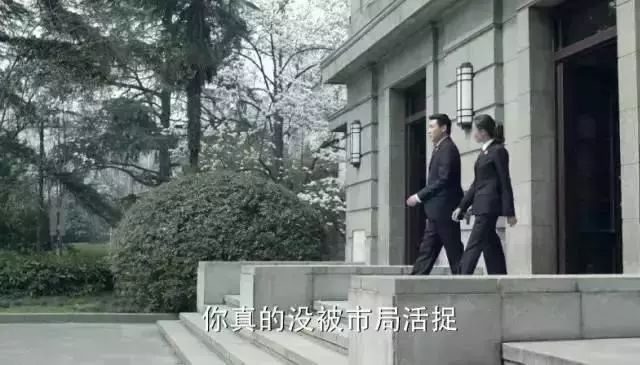
Figure Caption: From left to right: Hisilicon’s Sun Weifeng, Changzhou Mingjing Electronics’ Zheng Hui, and Hisilicon’s marketing manager He Zhiqiang.
Chapter 4: Digitalization Brings Historical Opportunities, Dahua Gave Hisilicon the First Big Order
At the beginning of this century, with the development of digital technology, the digital transformation of analog devices was underway. However, there was a large stock of front-end analog cameras, and it would be difficult to transform coaxial cables in a short time.
The traditional tape recorders at the back end were centralized and could be easily transformed into hard disk recorders (DVRs). An opportunity arose!
Traditional tape recorders required a large number of tapes, consuming a lot of storage space, and it was cumbersome to retrieve historical data. For example, a bank branch usually needs to keep video monitoring records for a month, requiring a room to store mountains of tapes.
DVR hard disk recorders have large storage capacities and can manage multiple hard disks. After the retention period (e.g., one month), the data can be automatically overwritten by new videos.
In the DVR hard disk recorder market, Chinese manufacturers (such as Hikvision and Dahua) appeared as pioneers and leaders in both the Chinese and global markets, rising rapidly. There are two forms of hard disk recorders: computer board cards and embedded systems (see below).
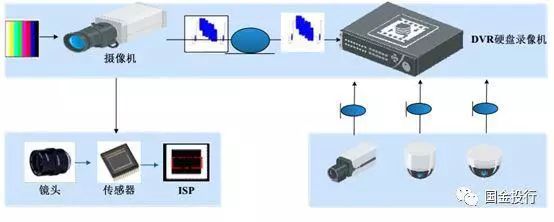
Figure Caption: Analog cameras and DVRs
The first generation of DVRs emerged in the late 1990s, supporting the MPEG 2 compression algorithm (which VCD uses). As early as 2002, Dahua launched the industry’s first self-developed 8-channel audio and video synchronous embedded DVR, which was the first generation. Most mainstream hardware solutions were based on Philips Semiconductor’s SAA7113+PNX13 series.
The second generation of DVRs began to develop in 2005, characterized by the adoption of MPEG4/H264 video compression algorithms, featuring VGA/HDMI high-resolution display interfaces. At that time, the chips supporting H.264 compression were just released (the DVD and Blu-ray HD-DVD we watch use these algorithms).
As mentioned above, Zheng Hui also began making second-generation hard disk recorders in 2006, using chips from a U.S. company, spending an entry fee of $100,000. After the financial crisis, this chip company collapsed, and all investments were lost.
Hikvision continued to use Philips Semiconductor (NXP) chips to make the second generation of hard disk recorders, but the heat was also considerable, so they also used TI (Texas Instruments) chips.
Timing is everything. Hisilicon’s H.264 video encoding chip appeared on the market at this critical moment!
At that time, there were no brands in the industry. How did they acquire their first customer?
At that time, Huawei Software Company collaborated with operators on the “Global Eye” video surveillance software platform, but lacked cameras, so they approached both Hikvision and Dahua for cooperation to purchase.
The software company’s “Old Wang Next Door” went with Hisilicon’s Sun Weifeng and Zhejiang sales representative Yin Jianguo!
Today, the well-known CEOs of Hikvision and Dahua, Hu Yangzhong and Fu Liquan, respectively, met with Huawei’s delegation.
Dahua was also developing the second-generation DVR, and there were few chips supporting H.264 at that time. Dahua aimed to be innovative and make a new product. Yin Jianguo closely followed Dahua, pushing for a tight strategic collaboration between Hisilicon and Dahua at the R&D level.
In 2007, Dahua and Hisilicon signed a contract for 200,000 pieces of H.264 video encoding chips (3510, 3511) for the rapidly developing second-generation hard disk recorders. Recently, I also confirmed this information with Mr. Li Ke, the president of Dahua.
It seems that this fact is set in stone: Dahua’s order is the first truly external chip contract for Hisilicon since its establishment. It is particularly noteworthy that this chip did not have the opportunity to be used in the mother company’s equipment first!
Senior chip commentator in my circle, Song Bing, said: “In the world of martial arts, only speed is unbeatable. Driven by Moore’s Law, the IC industry is a typical time-sensitive industry. The window of opportunity is fleeting.”
Starting from standalone codec chips, Hisilicon later developed system chips (SoC). By 2010, they began to enter the world’s largest security camera manufacturer—Hikvision—on a large scale.
Hisilicon provided a relatively complete solution without expensive entry fees, allowing Chinese manufacturers to sell DVRs both in China and globally! At its peak, Hisilicon captured 79% of the DVR chip market share.
Wang Hai once took Veteran Dai Hui to visit Huawei’s security facilities. The earliest were all analog cameras, contracted by companies like Honeywell, IBM, and Siemens. When Veteran Dai Hui worked in an overseas office, three unopened portable cameras were stolen on a weekend, and it was very difficult to review the 48-hour surveillance footage from the property’s small monitor, so everyone ultimately gave up in despair.
After Huawei’s video product line digitally transformed its campus, it could start using artificial intelligence technologies, such as license plate recognition, facial recognition, crowd counting, and virtual security lines.
Chapter 5: The Technological Revolution of IP and HD, Hisilicon Became the MediaTek of the Video Field
The digitalization and IP (Internet Protocol) wave has arrived. IP cameras have rapidly developed.
China has become the world’s largest security market! Safe cities, digital cities, smart cities, and intelligent cities.
China mainly adopts network cameras, with authoritative agency IHS explaining the reasons. Firstly, there are relatively few traditional coaxial cables in new buildings (most are network cables), secondly, network cameras are relatively inexpensive, and thirdly, China’s large projects often require scalability, which IP has a unique advantage in.
In data communication, H3C established a video surveillance product line, leading the trend of IP and developing an operating system called imos. After IP transformation, networking became much easier than before, directly pulling network cables without the need for coaxial cables.
This product line later became independent as Yushi Technology, which recently made headlines for “imos inside.” Yushi Technology seized the last opportunity for massive camera hardware and entered the top three. “Beihang’s Xin Qiji” Zhang Pengguo, joyfully rolling in poetry!
Network cameras (IPC) are at the front end, while NVR (network video recorders) are at the back end; see the diagram below.
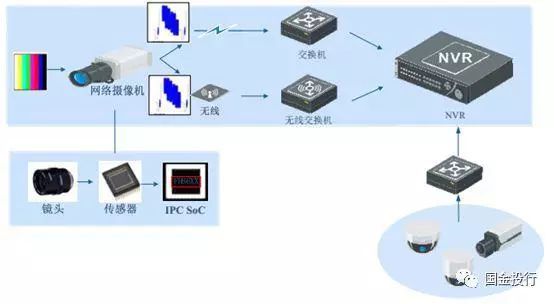
Due to its longstanding audio and video codec technology and reputation, TI and Ambarella had a high market share in the network camera (IPC) field at that time.
I remember one year, when Veteran Dai Hui attended the Security Expo, he visited Hikvision’s booth. He asked the Hikvision employee: “How are Hisilicon’s chips?” The response at that time was: “Huawei’s chips are used for inexpensive cameras, while TI’s are for high-end ones!”
On August 14, 2012, a notorious armed robber, Zhou Kehua, was shot dead by police in a shoe factory in Chongqing’s Shapingba district, with the help of Hikvision’s high-definition camera. Later, high definition became a standard feature of safe cities.
Just to mention, the system chip for NVR (network recorders) is shared by several companies, including Hisilicon, TI, and Marvell.
During this period of great change and rapid development, Hisilicon became the “MediaTek” of the video surveillance field.
It is well-known that in 2006, MediaTek launched the GSM mobile phone TURNKEY (turnkey) solution. MediaTek not only provides chips but also complete circuit board solutions and even platform software. This solution allows two or three people to set up a factory to produce mobile phones, which can mimic land mines, have six speakers, and do everything you can imagine! Overnight, thousands of “shanzhai” factories emerged, and Shenzhen became known as the “Shanzhai Capital.”
SoC is system-on-chip or chip-on-board. In simple terms, it means integrating multiple chips and embedded software from the circuit board into a single chip. This means that a single chip can perform the functions of an entire electronic system. It is easy to imagine the significant advantages of SoC in terms of performance, cost, power consumption, reliability, lifecycle, and applicability.
With SoC, Hisilicon’s overall solutions have significant advantages in cost control and have become the leading video surveillance solutions in China, akin to MediaTek (MTK). The development environment is also PC-based, friendly to many small manufacturers lacking technical capabilities.
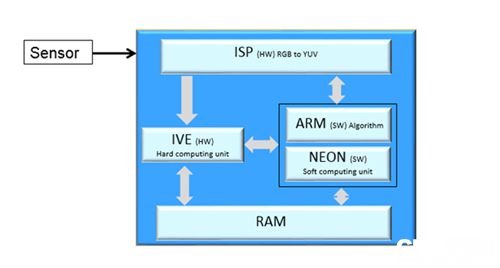
Figure Caption: Diagram of Hisilicon’s SoC
Only by standing on the shoulders of giants can one see farther; making SoC requires broad cooperation and cannot be done alone. It is necessary to purchase IP (intellectual property authorization) from other manufacturers, which can be either soft or hard cores. This is Hisilicon’s “borrowing philosophy” and “star absorption technique”!
The CPU adopts the ARM architecture from Cambridge, UK, just like mobile phones. An embedded operating system was built using a trimmed-down version of Linux.
The Image Signal Processor (ISP) is very core; Hisilicon initially purchased IP authorization from OmniVision, which was later successfully self-developed. Li Xiang from Lake Capital, who worked at the well-known CMOS sensor Geke for over ten years, told Veteran Dai Hui.
It is said that the earliest chip (3510) also had some externally cooperative parts in its video codec algorithm, but I have no way to verify this.
Using a Hisilicon SoC chip, along with some peripheral discrete components, one can create a circuit board for an IP camera. Entry-level products only cost around 80 yuan. Manufacturers can add power supplies and optical components to create a variety of entry-level cameras.
Whatever the Chinese do, the prices will drop significantly.
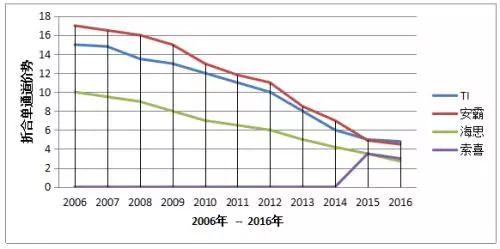
Note: Price trends for codec chips from 2006 to 2016, source: IHS
In 2012, the sales representative who took over from Yin Jianguo in Hangzhou became Top Sales, selling over a thousand million pieces just to Hikvision and Dahua, achieving massive shipments! It was also in this year that Huawei’s mobile chip K3V2 began to be used in the D1 quad-core version.
Yin Jianguo said: Due to professional habits, I always look at how many cameras are on the roadside while driving; previously, there was only one camera at a few intersections, but now there are several at one intersection. Cameras have also penetrated communities and hallways!
Also, Shen Yu, who studied imaging at Southeast University, worked for many years in a domestic conference television company POLYCOM and later entered the industrial-grade HD camera field. I visited him, and reminiscing about history, he told me: “High-definition imaging relies on high-performance imaging algorithm chips; previously, our imaging algorithms ran on foreign companies’ programmable logic devices (FPGAs), which is like building a tall building on an empty foundation, requiring a lot of work to complete all software tasks, and the scalability was quite poor.”
Shen Yu also mentioned: “Since Hisilicon launched a high-end SoC series specifically for HD imaging and encoding product development, we have been closely following and tracking it. In practice, we found that Hisilicon’s products increasingly meet our needs and have excellent cost performance. Hisilicon’s 351x series SoC chips have rich interfaces, built-in various ISP algorithm modules and audio/video encoding modules, and powerful development platform functions, with timely and efficient technical support, facilitating our rapid product development and iteration; Hisilicon’s open software architecture also makes it easy for us to embed our proprietary algorithms and software modules, showcasing product advantages. We widely use Hisilicon’s 3516C/3516A/3519 and other SoC chips in our products.”
Shen Yu further mentioned: “We used Hisilicon’s 3519 to be the first in the industry to support 4K-level HD imaging applications, providing strong assistance for us to catch up with and surpass foreign leading manufacturers.”
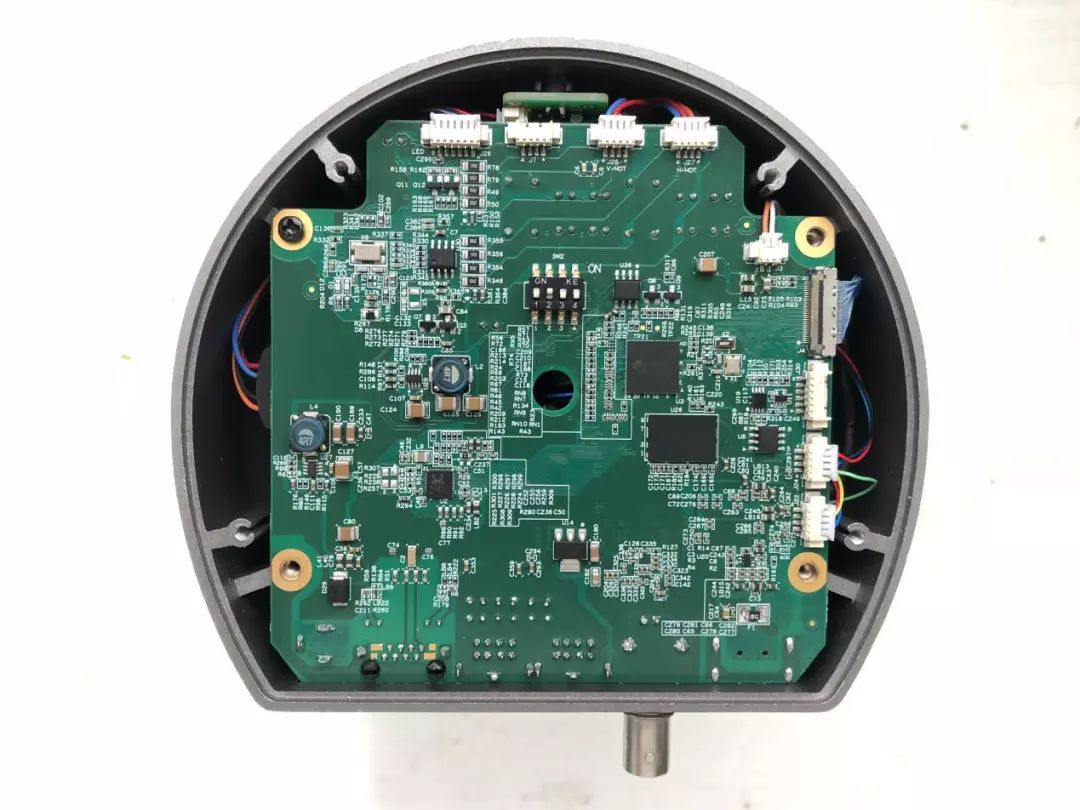
Figure Caption: Boshen Zhida was the first to support 4K ultra HD using the H.265 encoding algorithm.
By the time of the latest H.265 codec standard, Huawei had become one of the main participants in the standard and held many patents.
As early as September 2014, Hisilicon launched the industry’s first HD network camera processor Hi3516A based on the H.265/HEVC standard.
First-class enterprises sell standards (authorization), second-class enterprises sell technology (chips), third-class enterprises sell products (manufacturing), and fourth-class enterprises sell labor.
It is worth mentioning that since 2010, the security field has also established domestic standards: SVAC, jointly developed by the Ministry of Public Security and Zhongxing Micro. Certain specialized environments will require its use, and how SVAC standards will evolve in the future remains to be seen.
Chapter 7: Artificial Intelligence Creates a New World
Around 2009, Veteran Dai Hui researched the market for automatic license plate recognition. The cost to add this feature was about 6,000 yuan.
However, this market collapsed because TI and Huawei directly offered it for free.
On May 13, 2010, TI (Texas Instruments) launched the first million-pixel IP camera SoC with intelligent analysis capabilities—the Da Vinci (DMVA2) video processor, offering the automatic license plate recognition algorithm for free.
Soon, Hisilicon also packaged and offered the license plate recognition algorithm for free. However, the technical solutions of the two companies were fundamentally different.
TI’s DSP (Digital Signal Processor) is incredibly powerful; Huawei’s GSM base stations are based on TI’s DSP for baseband processing, which has low development costs and can be flexibly loaded. However, starting from 3G, they adopted their self-developed dedicated chips (ASICs), which are more efficient and consume less power.
In the field of video surveillance chips, traditional giant TI uses an ARM (CPU) + DSP architecture, which can flexibly load various algorithms applicable to various industries.
Mr. Zhao Yong from Peking University Shenzhen Research Institute stated: License plate recognition can be considered the earliest stage of artificial intelligence. Hisilicon’s success lies in integrating video codec algorithms and artificial intelligence algorithms into dedicated chip cores, using hardware decoding, thus achieving higher efficiency.

Huawei uses an ARM + IVE architecture. IVE is an intelligent video analysis acceleration engine made into a chip hardware core. In the vertical market of security, it outperforms TI in terms of power consumption, cost, and computing efficiency. A company called Zhixin Yuandong claims to have contributed to this.

Anyway, the “no-card parking” market has been discovered, and now most parking lots directly use number recognition, eliminating the need for cards. The parking lot contracted by ETCP, where Zhou Qi serves as a director, has taken over many parking lots.
In recent years, Huawei announced its return to security cameras, shaking the industry. This directly affected Hikvision and Dahua’s market.
In October 2017, Daily Economic News interviewed Hikvision CEO Hu Yangzhong. Hu stated: Everyone thinks chips are the most important embodiment of a company’s core competitiveness, but in our view, they are not. In 2009, we made an important decision to focus on solutions and software to get closer to customers. In my opinion, enhancing hardware is not as important as developing software systems. Not every company needs to make its own chips, as there is competition in the chip market itself.
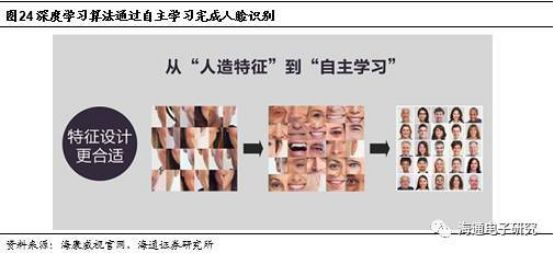
Recently, it has been learned that both Hikvision and Dahua are actively building their AI algorithms and designing their own AI chips to overtake competitors. Thus, catching and pursuing fugitives at concerts, like Jacky Cheung’s, will no longer be a novelty.
The future world will see a fierce competition; let’s wait and see.
Based on cameras, there are two common types of artificial intelligence applications.
One type is traffic police checking violations, such as running red lights and changing lanes illegally, which can be automatically analyzed. I received a heartbreaking short message: a passenger was not wearing a seatbelt, fined 300!
The other type is facial recognition, which is widely used in banks for business transactions, customs entry and exit, and even community access control. I know that companies like SenseTime and Megvii, as well as Huawei’s offspring such as Ruiwei Information and Jingke Lingzhi, are involved. An old friend of mine, nicknamed “Zhang Guolao” (Zhang Guoyou), specializes in turnstiles, embedding third-party facial recognition algorithms, reportedly selling to Tencent and the subway.
Chapter 8: A Single Flower Does Not Make Spring; Legends Are Everywhere
Chinese innovation in applications is constantly emerging.
Veteran Dai Hui himself has also delved into the field of industrial vision and artificial intelligence. Mingrui Lixiang Technology, in which he participated, uses HD camera technology for visual inspection of SMT industries and chip packaging, achieving a resolution of 1.47 microns. Mingrui Lixiang has also developed a rich variety of intelligent algorithms to assess the quality of solder joints and wires. It is a colorful world.
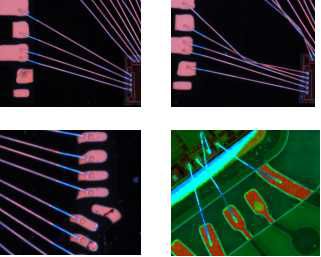
Figure Caption: Chip packaging photos taken by Mingrui Lixiang’s AOI.
Wang Hai from Shangguan News recorded Luo Yong’s legendary story. Luo Yong graduated with a master’s degree in 2004 from Gui Electric and became an “elder” in the “Little Hisilicon” multimedia product department, which had only five people at the time. Everything is difficult at the beginning; he experienced the entire process of Hisilicon’s IP camera chip growing from 0 to strength.
In 2013, Luo Yong left Hisilicon and launched the “Ding Ding Pai” dashcam, being the first to combine it with smartphones. In 2015, the “Chengdu Female Driver” incident dramatically reversed the entire plot with key evidence provided by the rear dashcam. Luo Yong used the descendant products of the IP camera chips he originally planned. Initially, he considered the customers’ thoughts from the perspective of a chip developer, and now he uses the chips as a customer, providing user experience feedback to Hisilicon. History is indeed wondrous.

Figure Caption: Dai Hui (left) with Luo Yong (right).
Fuhan Micro, invested by Hikvision, started with ISP (Image Signal Processing) and has maintained a certain market share in analog cameras.
However, in digital cameras (IPC), Hisilicon started from codecs, integrating ISP and CPU to create system-on-chip (SoC), which undoubtedly posed a significant challenge to Fuhan Micro. Therefore, using its own methods, Fuhan Micro also integrated codecs and CPUs to create SoCs and has become a chip supplier for Hikvision’s IP cameras, competing with Hisilicon.
Zhongxing Micro started with image input processing chips for PC cameras and went public, participating in the formulation of domestic security standards.
Guokewi started with satellite set-top box chips, having strong codec capabilities, and has entered the video surveillance SoC field.
Junzheng started with CPUs, and its IP SoC camera chips are used in Xiaomi and 360’s home camera products.
There are many companies that focus on systems. Dongfang Wangli mainly does VMS (Video Management Platform); Suzhou Keda and Su University of Science and Technology have made notable contributions in the professional market for conference television; Gaoxin’s subsidiary Guomai has performed well in the storage and processing of law enforcement records (wearable cameras) for traffic police and urban management; Xing Tianxia has long been engaged in digital intercom systems for buildings.
In the investment circle, Gong Hongjia, a graduate of Huake, gained fame with a thousand-fold return on investment in Hikvision.
Conclusion
Hisilicon seized the golden opportunity presented by China’s significant investment in the digital security field. In a word: timing, location, and harmony.
Timing: It aligned with significant technological innovations in digitalization, IP, HD, and intelligence.
Hisilicon’s strategy was successful: focusing on the niche field of security and solidifying algorithms into ASIC dedicated chips to enhance efficiency and reduce power consumption!
Location and harmony: China has numerous manufacturing enterprises, and Huawei provides a turnkey chip and operating system solution, creating a friendly development environment that meets the needs of many enterprises.
Please note: Veteran Dai Hui is about to publish a sister article titled “How Hisilicon Set-Top Box Chips Became Dominant,” which is another multimedia chip miracle created by Hisilicon. Stay tuned.
Veteran Dai is also writing about Hisilicon’s IoT chips (WIFI, NB IoT, PLC), etc. If you have used or know about the experiences of Hisilicon’s peers, please share your experiences with me at [email protected]. Thank you!
END




